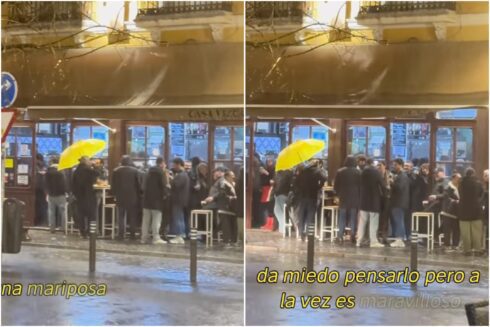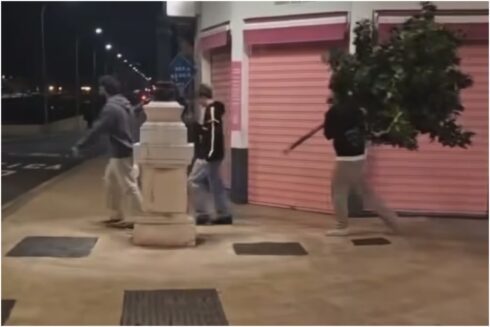{mosimage}
TRYING to find somewhere new and exciting
to take young children is often a challenge here in Andalucía. At Los Cahorros, with its dramatic gorge to
explore, shallow river and inviting “tunnel” through over-hanging
cliffs, there is much to keep lively legs occupied for a great day out. Our energetic two-year old walked a good
stretch of the path and it made such an impression on her she repeated the word
“tunnel” all the way home. There are shaded picnic spots, a small
paddling area under one of the bridges, daredevil mountaineers to watch with
bated breath as they scale the cliff-faces, and the sheer drama of walking
under the massive rock formations. This green and rocky valley is particularly
picturesque at this time of year as it is full of alamos (poplars) whose leaves
are just changing colour. Walks here can be as long or as short as you like, a
simple circuit can be done in 40 minutes, while longer walks can go on to the
vega, a grassy plain, where the ravine opens out, or further still to the
‘Central Eléctrica’, a small hydro-electric power station, beyond. We spent about four and a half hours doing a
full circuit along both sides of the river.
Paths leading down into the gorge start
just beyond Monachil, a small village at the foot of the
south, turn off on the Ronda Sur and then take the first exit off, signposted
to Cájar and Monachil. Continue following signs for Monachil up out of the
valley, with the river Monachil down on the left. Once in the village itself
bear left over the river and then turn sharp right to drive up the left-hand
side of the river. There are big wooden
signboards at the bridge directing you onto this old road which winds its way
up into the
you leave the village and the road snakes its way upwards. You know it’s time
to look for somewhere to stop when you spot the roof of a bar below on the
right, and you can park either on the access road here, off to the right, or a
few metres further on in the small and often overcrowded car park (best to get
there before mid-day to find a space).
The bar, La Terraza del Puntarrón, is a
good place for that welcome coffee or beer to start off a walk, and there is an
open terrace down below for children to run around in. Meals and drinks are
served here at weekends, opening at
no ice-cream!) From the bar head back up to the access track which forks off to
the right, leading down into the valley of the Monachil river.
There are big wooden signs here pointing you towards the “Puente Colgante”,
the hanging bridge (in fact there are three altogether, two smaller ones as
well as the dramatic big one – the path crosses the river several times). There is also the “Tunél de las Azuelas”
to explore: the path along the river literally creeps beneath overhanging rocks. (
might be advisable here in winter months for children wishing to splash ahead,
the water comes directly down from the mountain peaks!)
{mosimage1}
After about ten minutes the main track ends
at the gates of a big house, and the path continues to the right, following the
acequia (irrigation channel). A few minutes later the path divides, one branch
heading down to the river and one up onto the cliff-tops. They meet up again
about 20 minutes later, so parties can split up here to regroup at the main
hanging bridge. I was glad to find it only took five minutes to reach the top,
following the grey, dusty path steeply up to the left and from some craggy
rocks we could wave down to pin-size people below. The views from the tops are
impressive and give you a clear idea of the weight of rocks the river has had
to channel its way through. You also get to look down on the climbers from here
and onto one of the hanging bridges. If you go straight down to the river on
the lower path, ignore the first set of steps right down into the gorge and
continue alongside the acequia for a short way until you reach the first of the
hanging bridges. After the bridge steps
take you down to the river and back up the other side. Simply follow the path
to the left until you reach a second bridge. At this point children can
scramble down onto a small sandy patch with a waterfall behind some rocks; it
is a great spot for paddling, making dams and, if you are already hungry,
getting out the picnic.
A short circuit of around 40 minutes can be
done just by combining the higher and lower routes in whichever order. Don’t
leave though without venturing across the “Puente Colgante”, a long,
swaying, hanging bridge which takes you diagonally across the river, with
fantastic views (not always popular with dogs though!). If you decide to carry
on after the bridge, you will find a narrow, concrete path that runs along the
river’s edge. The route becomes rather more exciting and challenging along
here, as the cliffs drop down low over the path making it impossible to walk
along upright in parts, and at some points it is safest to sit down and edge
along (the shiny surface proves that this is often done!). Our toddler was able
to walk along most of the path, watching her head on the walls, and holding
onto my hands.
The entrance into the “tunnel” looks
daunting, but is quite feasible if taken slowly and gently. We passed many families with children of all
ages who were clearly having a great time.
It took 45 minutes, walking at toddler pace, to reach the Vega from the
bridge; this is where the land flattens out and there is plenty of space for
picnics, running around and exploring the river which is still shallow at this
point. There is another hanging bridge
here, and a path leads off to the left opposite, but this involves a long,
steep haul back up the hillside (we did it last time, not to be recommended!). For families, it is probably best to retrace
steps here, and vary it slightly back to the beginning by following the
alternative path.
{mosimage2}
Older or more energetic walkers may like to
explore other options though, and continuing on to the
the small hydro-power station 30 minutes further along the right hand side of
the river. Our child was now exhausted
and sleeping soundly in the backpack, so we had a break at the Central
exploring rocks and mapping out possible future walks into the hills.
We used the 1:40.000
Alpina, and the book “
directions of the area. A vehicle track
comes down to the power station, which if followed back up the hill would bring
you out at the camp site at Purche, a good way further along the old Sierra
Nevada road (a challenging walk for those who are adventurous enough and can be
picked up at the end). Retracing our
steps, about half way back to the Vega there is a path forking off down to the
right to the river at the Puente de las Chorreras. We crossed the bridge here
and then zig-zagged up the hillside for about 15-20 minutes and stopped for a
banana break on the top looking down on the grassy plain below, letting Olivia
stretch her legs again while we breathed in that lovely dry smell of wild thyme
that abounds here amongst the rocks.
This path is clearly signed, and brings you
out on the cinder track coming up from the river. We crossed straight over the
track, following a red stripe on the rocks (always a useful path indicator) and
this cut off the very winding route that the track takes around the country
houses. The last part of this path was a
bit steep and overgrown, but brought us out on the same track leading out of
the valley, and turning left it took only ten minutes to the car park. It had taken us one hr and 15 minutes from
the Puente de las Chorreras, with a 20 minute stop, and we were glad to find
the bar still open serving a refreshing clara and
plate of patatas con huevos. Just what’s
needed if you’ve left too late in the morning and haven’t packed enough of a
picnic!
If you have time, continuing on along the
old Sierra Nevada road that winds on up into the mountains is a wonderfully
scenic route back, bringing you out just below the ski resorts on the main road
that descends down to the Ronda Sur.






